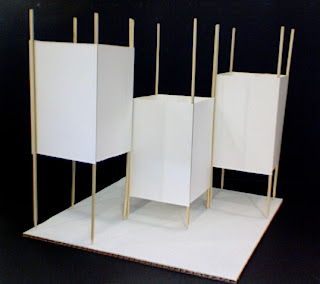

Scale: Architecture is the largest and most encompassing of the visual arts (Roth 75). This is shown by the temple of Hatshepsut versus the Pyramids at Giza and how they compare in their scale. Hatshepsut’s temple is smaller because of her status as the daughter of Thutmose I and Queen Ahmose, but also for her marriage to her brother, Thutmose II. Her temple is compared to the Great Pyramid at Giza built by Khufu. His pyramid is the largest pyramid of four that sit at Giza. The smaller three pyramids are thought to have been for the members of his household, which are smaller in comparison to his pyramid due to their standing in society. Hatshepsut’s temple and the Pyramid at Giza are both intended for worship, but with their massive scale and stone guards, they ward off any potential visitors. Scale is mostly characterized by measurements. How big a building is, relative to the size of the average human being is said to be its scale (Roth 75).
 Unity: Unity can be depicted in any number of ways, whether it be by decorative elements or the use of skewers and paper to make a model. Unity was used in the homes of the Greeks preferred a plan in which the emphasis was on distribution of rooms around a court, as revealed in a 2nd Century BC plan (Blakemore 31). The Greeks put great emphasis on the role of orders, which they considered significant in defining spaces of the interior (Blakemore 28). Interior spaces should be unified in a way that the architecture flows and the different parts can make up a whole. Elements should compliment each other and come together in a way that is unified. For the model from skewers and paper, the elements are connected, but are also unified by their construction and physicality.
Unity: Unity can be depicted in any number of ways, whether it be by decorative elements or the use of skewers and paper to make a model. Unity was used in the homes of the Greeks preferred a plan in which the emphasis was on distribution of rooms around a court, as revealed in a 2nd Century BC plan (Blakemore 31). The Greeks put great emphasis on the role of orders, which they considered significant in defining spaces of the interior (Blakemore 28). Interior spaces should be unified in a way that the architecture flows and the different parts can make up a whole. Elements should compliment each other and come together in a way that is unified. For the model from skewers and paper, the elements are connected, but are also unified by their construction and physicality. Section: Sections are views of an object or building from the perspective as if it were cut in half. Section views shed a new light on a project by giving a different view that is normally never seen. Section can also be described by the spaces or sections of a piece of architecture. The Greeks used sections to define the porch, court, and hearth of every piece of architecture. The temple, Megaron, is an example of a building with a porch, court, and hearth. The porch is the entrance way into the temple, while the court is the open space between the entrance and altar. The hearth is the altar or place of worship for the priests and to keep treasures.
Section: Sections are views of an object or building from the perspective as if it were cut in half. Section views shed a new light on a project by giving a different view that is normally never seen. Section can also be described by the spaces or sections of a piece of architecture. The Greeks used sections to define the porch, court, and hearth of every piece of architecture. The temple, Megaron, is an example of a building with a porch, court, and hearth. The porch is the entrance way into the temple, while the court is the open space between the entrance and altar. The hearth is the altar or place of worship for the priests and to keep treasures. Boundaries: The Great Wall of China is one of the best examples for setting boundaries. The wall was built over a 200 year period and is about 4000 miles long. (Great). It stretches from ShanHaiGuan in the east to JiaYuGuan Pass in the west, along an arc that roughly delineates in the southern edge of Inner Mongolia (Great). China used the boundary of the Wall to establish borders and for protection, while the Romans used boundaries in a much different way. The boundaries they set were on social standing and architecture that was allowed for each social class, also for what kind of buildings were used for what. The Romans used utilitarian facilities that met their needs for religion, commerce and law, recreation, and celebrating victories. In addition, the type of residence was, to some degree, a reflection of the social position of the resident (Blakemore 47). Differences in material, construction techniques, and decorative processes are evident…despite these differences, similarities existed among the residences representing various socioeconomic levels (Blakemore 9).
Boundaries: The Great Wall of China is one of the best examples for setting boundaries. The wall was built over a 200 year period and is about 4000 miles long. (Great). It stretches from ShanHaiGuan in the east to JiaYuGuan Pass in the west, along an arc that roughly delineates in the southern edge of Inner Mongolia (Great). China used the boundary of the Wall to establish borders and for protection, while the Romans used boundaries in a much different way. The boundaries they set were on social standing and architecture that was allowed for each social class, also for what kind of buildings were used for what. The Romans used utilitarian facilities that met their needs for religion, commerce and law, recreation, and celebrating victories. In addition, the type of residence was, to some degree, a reflection of the social position of the resident (Blakemore 47). Differences in material, construction techniques, and decorative processes are evident…despite these differences, similarities existed among the residences representing various socioeconomic levels (Blakemore 9).

 Vignette: A vignette can be defined as a collection of stories told without words. Vignettes encompass a subject and sometimes the surroundings around it. Multiple parts and objects can make up a vignette. For our drawing class this week, we had to draw vignettes of people and their surroundings in a coffee shop or restaurant. We also had to draw our teacher’s assistants working in at a table with many of the objects that surrounded them on the table.
Vignette: A vignette can be defined as a collection of stories told without words. Vignettes encompass a subject and sometimes the surroundings around it. Multiple parts and objects can make up a vignette. For our drawing class this week, we had to draw vignettes of people and their surroundings in a coffee shop or restaurant. We also had to draw our teacher’s assistants working in at a table with many of the objects that surrounded them on the table.Summary: Vignettes encompass the boundaries of an area in a drawing with scale figures of people or objects that are unified with the surroundings in their certain section. Each term relates to one another in the way that a drawing or piece of architecture would not be able to be built or drawn without one another.
Cites:
http://www.janisb.com/blog/wp-content/uploads/2008/09/great_wall_of_china.jpg
http://img.trivago.com/uploadimages/37/79/3779791_l.jpeg


No comments:
Post a Comment